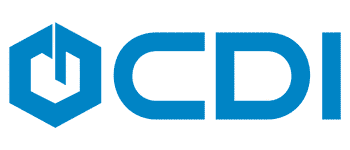Integrate Programs with Zero Programming Using Connector
- CDI

- Jul 30, 2025
- 4 min read
Updated: Jul 31, 2025
By Kyle Knebel
July 2025 Consultants Corner
Laserfiche’s Connector product lets you easily connect line of business applications with Laserfiche. An easy-to-use configuration wizard lets you build integrations that can be called through user-defined hotkeys or embedded buttons.
This month’s article will show you how to look up documents in a Laserfiche Cloud repository by using a key value from an example application.
With Laserfiche Connector 11 installed (the most current version as of this writing), we will build a Connector Profile that uses a client name in Dynamics CRM to find matching documents in a Cloud repository. Building Connector Profiles requires that the machine used to do this has the LF Connector Profile builder installed. End-users who just run the profile do not need to have the Profile Builder installed.
Let’s build!
Step 1: Create the Connector Profile.
In this example, you launch the Profile wizard from the task bar icon for Connector that looks like a little plug. Then click “Add Profile…”

The Profile Creation Wizard opens. Here you name the profile and configure how it will get a keyword value (in this case an account name) from the business application, how it connects to LF Cloud, and how it will search for matching documents.
Once you have opened the Connector Configuration utility, press the Add button. The Profile Creation Wizard will be launched.
Create Profile
Creating a profile consists of five main pages:
Creating the profile and choosing the Action
Getting Information
Profile specific configurations (Additional pages appear based on type of profile)
Running the Profile (Keyboard shortcut and Button properties)
Testing the profile
Step 2: Enter the Profile name so that it describes the action you want to take, since this name will be what users will see. Don’t name it “fiche tips!” That would be silly!

Step 3: Select the Action that will be performed with this profile.
Types of Actions available

Step 4: Configure the Get information from section.
Set the profile to get information from an application or command line parameters.

Command Line parameters: Select this option if you plan to start the profile from the command line and want to skip retrieving tokens from a source application. Even if you do not select this option, you can still start a profile from the command line. In general, we recommend passing only token values through command-line parameters that Connector cannot retrieve from the target application directly.
If selecting an application, press the “Add source application” button. Then click-drag the target “bug” onto the application screen and release.

Step 5: Continue by configuring the Source Application options. Your choices are “JavaScript”, “UI Automation” or “OCR.”
JavaScript to find controls or UI automation to find controls.
Using JavaScript to find controls will work for most applications and websites; however, if you are having difficulty selecting the controls you want, try the UI automation method.

Click and then drag the target icon over the application window, then release the mouse button. The Process Name and Window Class will be filled in automatically.
When you click Save, Connector will analyze the application or website and then take you to the next step in the configuration process.

Note: Do not change the state of the referenced application (on a web page, don’t navigate to another page) until you have completed the Define Tokens page
You may get a warning message if using a Chrome based Web browser. You’ll need to manually update the properties of the browser application target with some “options” added, as shown below.
Option text to add: “ --remote-debugging-port=9222 --remote-allow-origins=localhost”.
Close the browser, relaunch LF Connector, and then build the Profile again.

Step 6:
Define Tokens
At this point, you can define your tokens or add additional application sources.

Here, you’ll define the tokens that will obtain values from the fields (controls) in the application. In this example we will grab the Account Name value, therefore this token would be named something similar, like “Account name.”

Next to each Token Name is a target icon that should be dragged onto the target input field that holds the value or token content.

Click and hold the left mouse button on the target selector then move the target over the target field. (You may need to move the Wizard out of the way to see the targeted fields.)
Roll the target over the field until a red outline appears.
Release the mouse button to select the field.
Make sure the token content reflects the text or value that is to be obtained.
Select “Add token” at the bottom of the Wizard to insert more tokens for capture.

Once you have defined all the tokens needed, press the Next button to go to the next page.
Laserfiche Repository
In the Laserfiche Repository section you can connect to a local repository or to your Cloud repository. In either case, the client will launch at the time you run the profile. There is nothing to configure on this screen except for the type of repository.

Search Criteria
In the Search Criteria section, you will use the tokens you previously defined. Select the name of the search token from the token selector, then configure where the values will be used. This is done in the “Search within” and “Entry type” areas. Check the appropriate boxes for your needs.

I typically use the Quick search, but Laserfiche Advanced search syntax can be used, as well.

Running the Profile
In the next section, you can modify the size of the LF Connector button icon that will be visible on the application screen. Additionally, you can allow the users to move the location of the button on the screen.

Test
Click the TEST button to run the search and see the results. The client should launch, and the results should be listed in a search results area in the repository.


Optionally, you could search for folders with the matching Account Name. Here’s the Search Criteria configuration if using a folder search.

And here are the results in the client.

Happy Integrating!




Comments